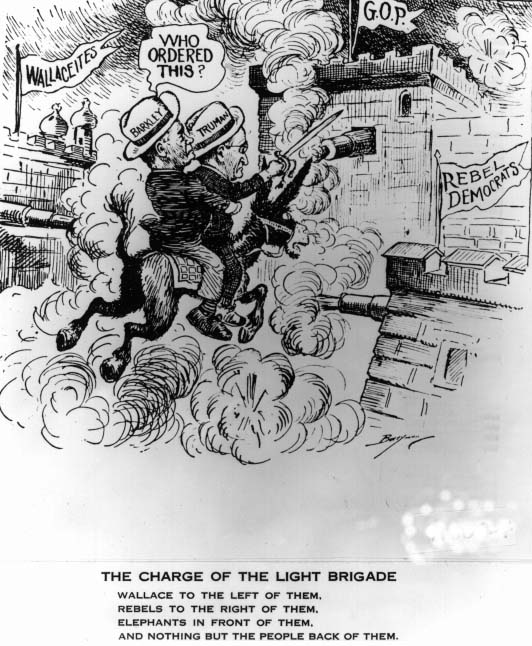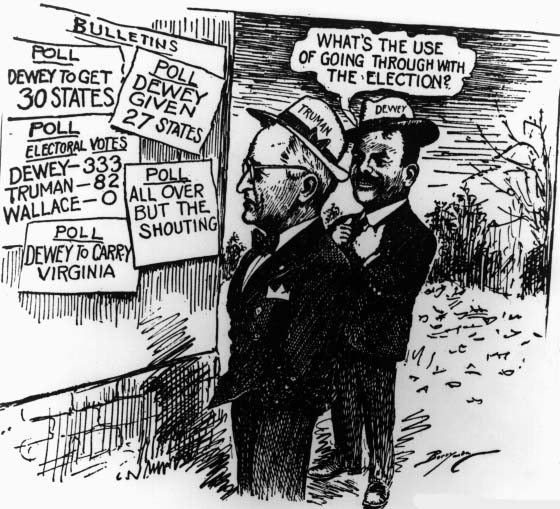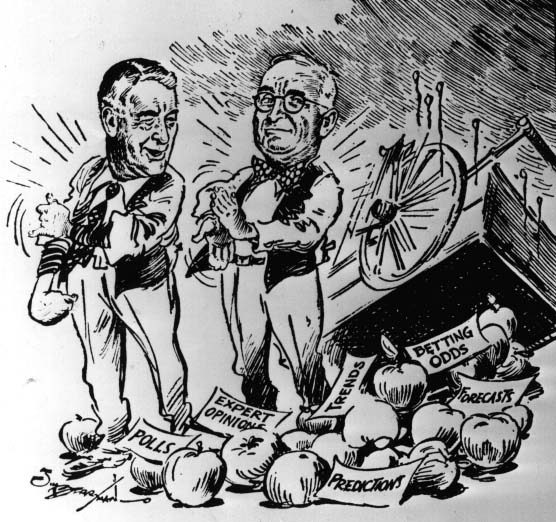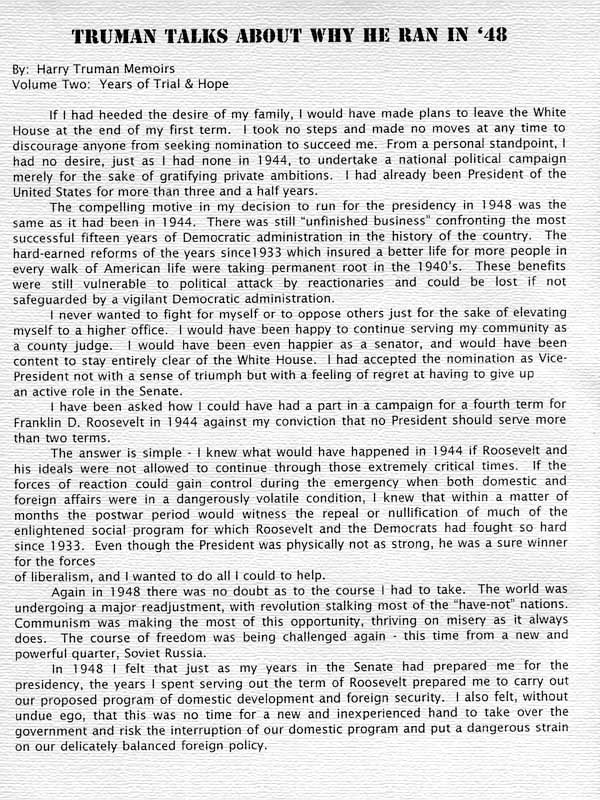Political and editorial cartoons have long been a part of the propaganda that influences the masses. Originating during the Protestant Reformation in Germany, this visual indoctrination gave support to the cause of Martin Luther's religious reforms. Because of the high illiteracy rate among the public at the time, these cartoons became known for their straightforward simple pictorial nature. American political cartooning assumed this direct appeal to the masses as well. Tracing its origins to Benjamin Franklin and his cartoons asking for unity during the American Revolution were the first of their kind in the new country.
Political cartoons in the United States came in and out of prominence through the early nineteenth century. Not until the late 1880's did this media gain true merit again. Pressing for social and political change, the artist Thomas Nast began creating charicatures of the Tweed Ring at Tammany Hall in New York. His approach of using lively pictures that appeal to the masses and using very few words was very effective in enlightening his multi-ethnic New York readers to the injustices of city government.
The Truman administration was no stranger to the sneers and jeers of political cartoonists. Facing such controversial issues as the desegregation of the armed forces, dropping of the atomic bomb, the cold war, the fair deal, the Republican takeover of Congress, and the 1948 presidential campaign, political and editorial cartoons were commonplace. President Truman, no matter how scathing, always professed a fondness for the cartoons and became an avid collector of them in his post-presidential years.
The 1948 presidential campaign of Harry Truman has been dubbed one of the greatest political campaigns of the modern era. No one, Republican or Democrat gave incumbent President Truman any hope of defeating a Republican nominee....especially Thomas E. Dewey, governor of New York. Southern Democrats (Dixiecrats), led by Senator Strom Thurmond, and Progressives, led by Henry Wallace, had splintered from the Democratic Party leaving a fractured and hopeless group searching for a saving grace in the '48 election. A stronger civil rights platform in the Democratic party was the cause of this rift. Beginning with his 1948 State of the Union address, Truman quickly found that his ten month campaign would be long and hard.
Truman and his entourage embarked upon a whistlestop campaign of immense proportions travelling more than 21,000 miles, stopping in more than 250 cities, and delivering more than 300 speeches. Even with the nomination of his party behind him, none but Truman believed that the presidency could be won. Magazines, newspapers, and pollsters had written him off. Sidney Shallett in the Saturday Evening Post wrote, "The Governor of New York talks not like a man who wants to be President, but like a man who already is President in everything but name, and who merely is awaiting the inaugural date before taking over." This optimism ran high late into the political season. As November approached, no relief was given to the Truman campaign. Truman wrote to his sister in the autumn of 1948, "It will be the greatest campaign any President ever made. Win, lose, or draw people will know where I stand..." Even the Democratic party had lost faith and refused to spend their usual exorbitant amounts of money on the election. As election day drew near, the whistlestop campaign drew to a close and President Truman returned to Independence to await election day.
Harry Truman described the day best at dinner of the Presidential Electors on January 19, 1949:
...I had my sandwich and glass of buttermilk, and went to bed at six-thirty. And along about 12 o'clock, I happened to wake up for some reason or other, and the radio was turned on to the National Broadcasting Company. And Mr. Kaltenborn and Mr. Harkness were reporting the situation as it then developed. Mr. Kaltenborn was saying, "While the President is a million votes ahead of the popular vote, when the country vote comes in Mr. Truman will be defeated by an overwhelming majority." Mr. Harkness came on, and analyzed the situation as it was then, and as Mr. Kaltenborn had recorded it. And to the sorrow of myself, and to those who were listening with me, it looked very much as if the elction would be thrown into the House of Representatives because, of course, it was not possible for me to get a majority of the eletoral votes. I went back to bed, and went to sleep. About 4 o'clock in the morning, the Chief of the Secret Service came in and said, "Mr. President, I think you had better get up and listen to the broadcast. We have been listening all night." And I said, "All right." I turned the darn thing on, and there was Mr. Kaltenborn again. Mr. Kaltenborn was saying, "While the President has a lead of two million votes, it is certainly necessary that this election shall go into the House of Representatives. He hasn't an opportunity of being elected by a majority of the electoral votes of the Nation!" And Mr. Harkness came on and analyzed the situation. I called the Secret Service men in, and I said, "We'd better go back to Kansas City, it looks as if I'm elected!" Along about 10 o'clock, I had a telegram which said that the election was over, and that I should be congratulated on the fact that I had won the election. Apparently it was too bad, but it happened!
President Truman managed to carry 24,105,812 popular votes to Dewey's 21,970,065. Carrying 28 states and 303 electoral votes, Truman easily defeated Dewey, who had only 189 electoral votes from 16 states. Truman suprised the pollsters and the nation by returning to the White House.
Analyzing political cartoons takes practice and skill. This activity gives the students an opportunity to work with cartoons and become more familiar with the medium
- Develop critical question to explore the artistic techniques used in political cartoons and how these techniques impact a cartoon's message
- Evaluate an author or artist's meaning by identifying his or her point of view
- Identify and explain the artistic techniques used in political cartoons
- Analyze political cartoons by using the artistic techniques and evidence from the cartoon to support their interpretations
Show Me Standards Covered:
Knowledge: SS7, SS3, CA3, CA4
Performance: 1.4, 2.1
Further Reading
Abels, Jules. 1959. Out of the Jaws of Victory. New York: Henry Holt and Company.
Donaldson, Gary. 1999. Truman Defeats Dewey. Lexington, KY: University Press of Kentucky.
Giglio, James N., and Greg G. Thielen. 1984. Truman in Cartoon and Caricature. Ames, IA: Iowa State University Press.
Ross, Irwin. 1968. The Lonliest Campaign. New York: The New American Library.
Yarnell, Allen. 1974. Democrats and Progressives: The 1948 Presidential Election as a Test of Postwar Liberalism. Los Angeles: University of California Press.
A Brief History of Political Cartoons
This web page contains more in depth information concerning the use of political cartoons in Reformation Germany. Furthermore, the site discusses the role that political cartoons played in the formation of the United States and their evolution in the United States through the works of Thomas Nast, Joseph Keppler, and Carl Schurz.
Document Analysis
Cartoon 1
- List the objects and people you see in the cartoon. Who were the Wallaceites?
- What is the G.O.P?
- Who were the "Rebel Democrats?" Why are they depicted as the enemy of Democratic presidential nominee, President Truman?
- Use five words to describe this cartoon. What idea is the artist trying to convey in this cartoon?
- How does the caption help to convey the author's ideas in this cartoon?
- How does the title of this cartoon, "Charge of the Light Brigade," convey the author's message? What was the Light Brigade and what is its' significance to history?
Cartoon 2
- What is the significance of the title of this cartoon?
- Who is Dewey? Why is he in the cartoon?
- Why does Dewey state, "What's the use of going through with the election?" What was the result of the election? How close was it?
- Who was predicted to win the 1948 presidential election according to this cartoon?
- List adjectives that describe the emotions portrayed in the cartoon.
- In your own words, explain how the words in the cartoon explain or clarify the symbols.
Cartoon 3
- Who is the person standing next to Truman? Why is he in this cartoon?
- What is the significance of the overturned cart?
- What are the apples with the words polls, betting odds, etc. trying to convey?
- When do you think the cartoon was created (month and year)?
- In your own words, explain the message of the cartoon.
- Which words or phrases in the cartoon appear to be the most significant? Why do you think so? (Not all cartoons include words.)
Follow-Up Questions
- Examine Truman's memoirs regarding his campaign in 1948. What reasons did he provide for running again? What does this say about his character? Did Truman run for President in 1952? Why or why not?
Truman talks about why he ran in 1948 - What purpose does a political cartoon serve? Does a political cartoon serve an adequate role to produce social and political change? Justify your answer by analyzing a current political cartoon.
- Draw your own political cartoon using a current event as a subject. Then briefly explain in one to two paragraphs the purpose of the cartoon, what ideas you are trying to convey, describe what symbols you used to convey these ideas, and tell how the text (if any) supports the cartoon.
- Examine a current political cartoon. Give it a new caption. Briefly explain how your caption has changed the meaning of the cartoon. What ideas are you trying to convey?
- Compare and contrast a political cartoon with one of your favorite comic strips. What are the differences in the symbols, characters, and messages of each?
- Create a timeline of the year 1948. Be sure to include international events as well as domestic events. What were the pertinent matters before President Truman throughout the 1948 campaign?
- Locate a cartoon, poem, or pamphlet that takes a different point of view of the events of the 1948 election. Write a paragraph comparing the similarities and differences of the opposing items.
- Write a newspaper column on November 2, 1948, the day after the election. Describe your amazement at the outcome of the election.
Discussion Questions
- How would you respond to your political cartoonist critics if you were Truman, faced with insurmountable odds in the 1948 election?
- How effective is the political cartoon as a document of historical significance? Compare the political cartoon to other historical documents such as newspapers, letters, diary entries, and photographs.
- From whose point of view are these cartoons drawn?
- What attributes of the cartoon make you feel sympathetic or unsympatheitc to the cartoonists' point of views?



